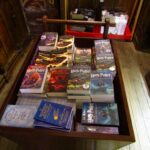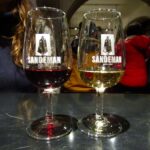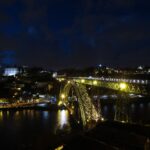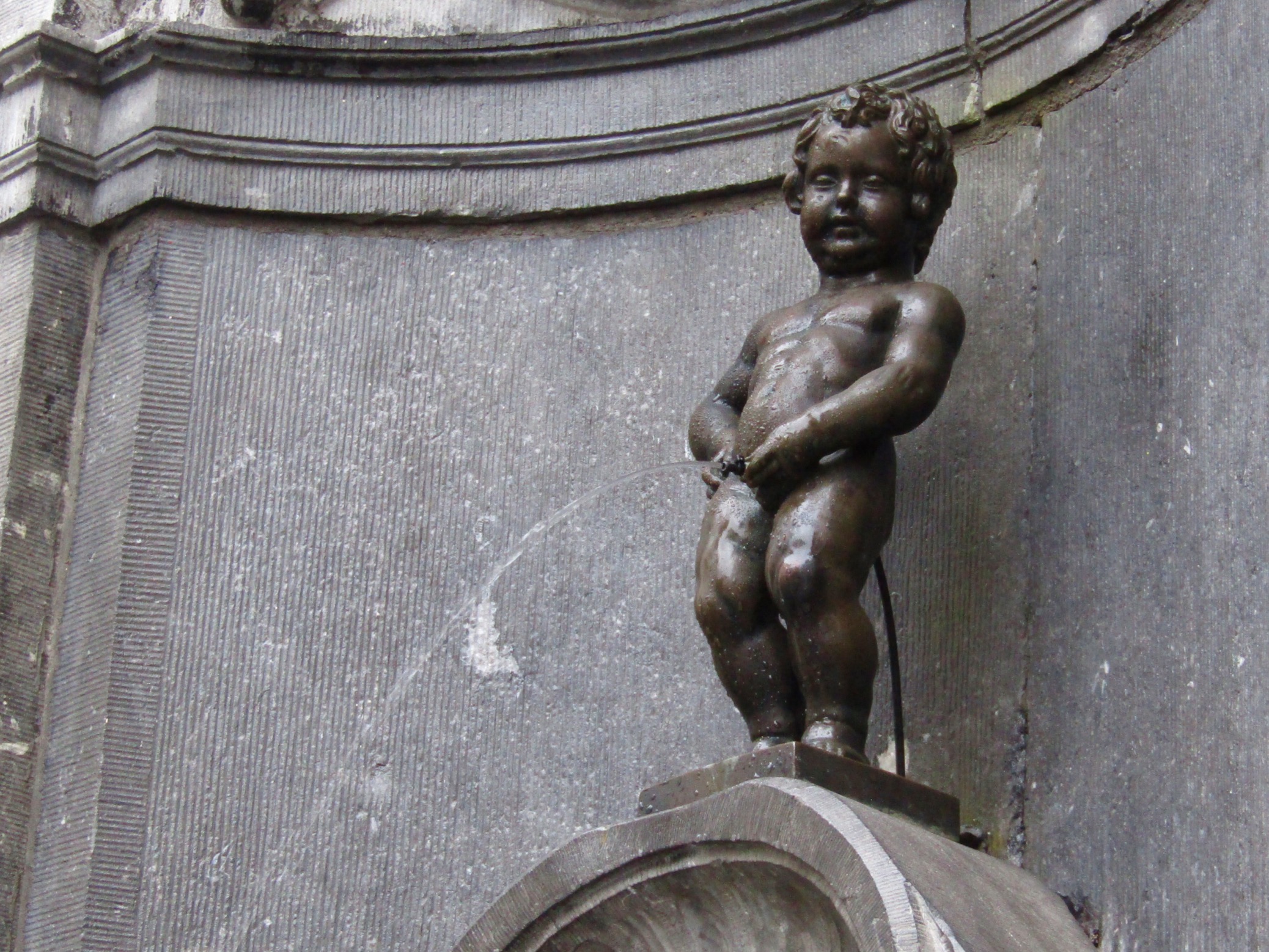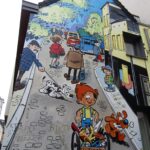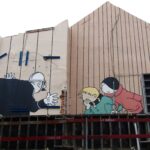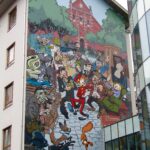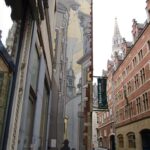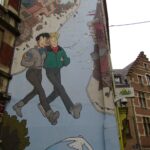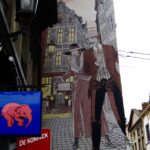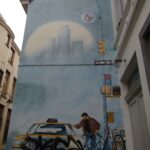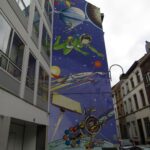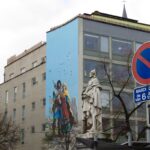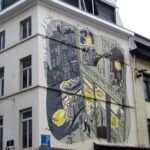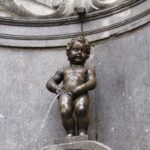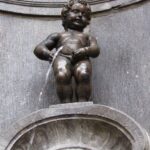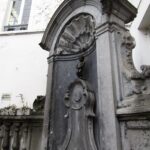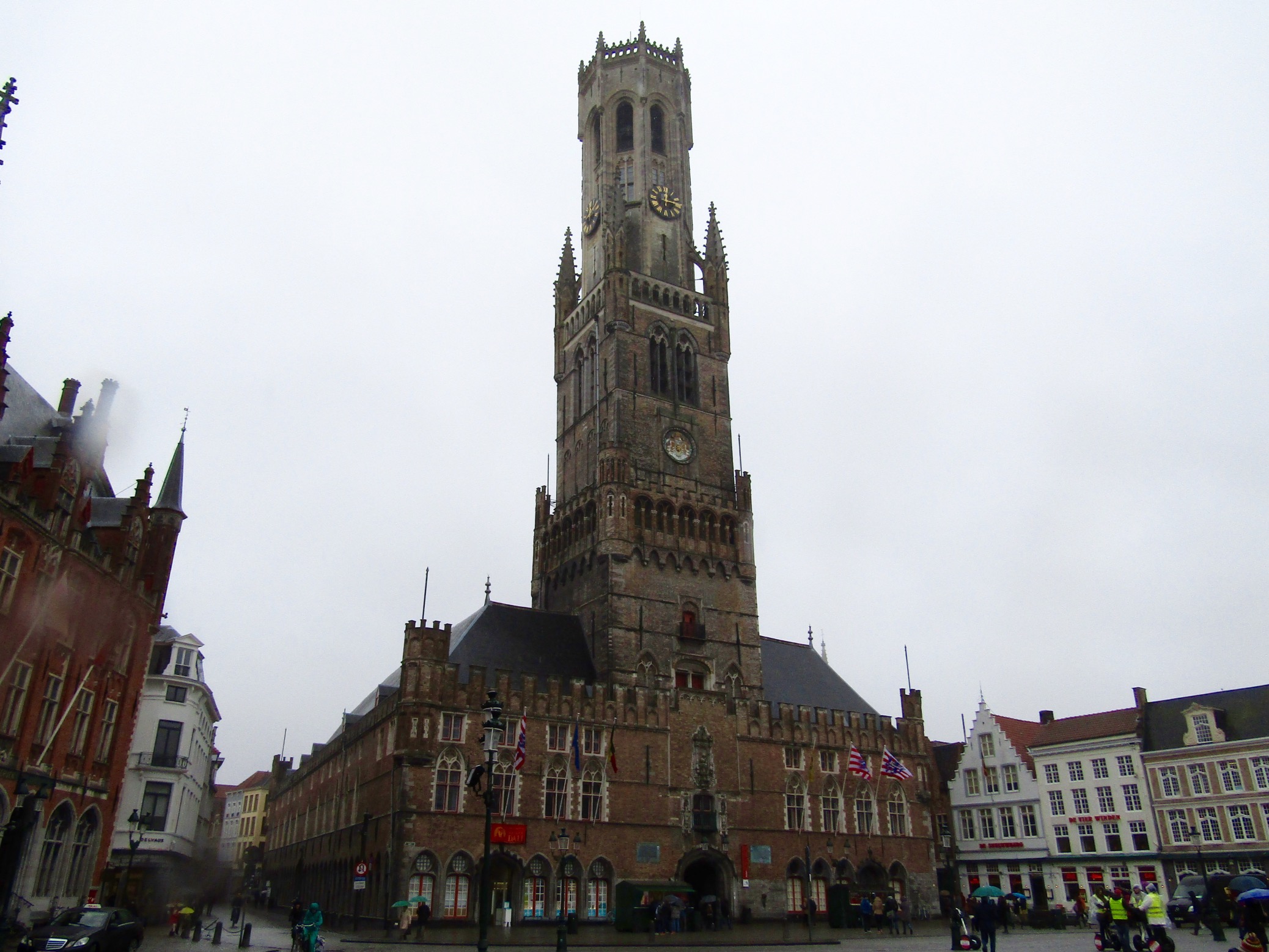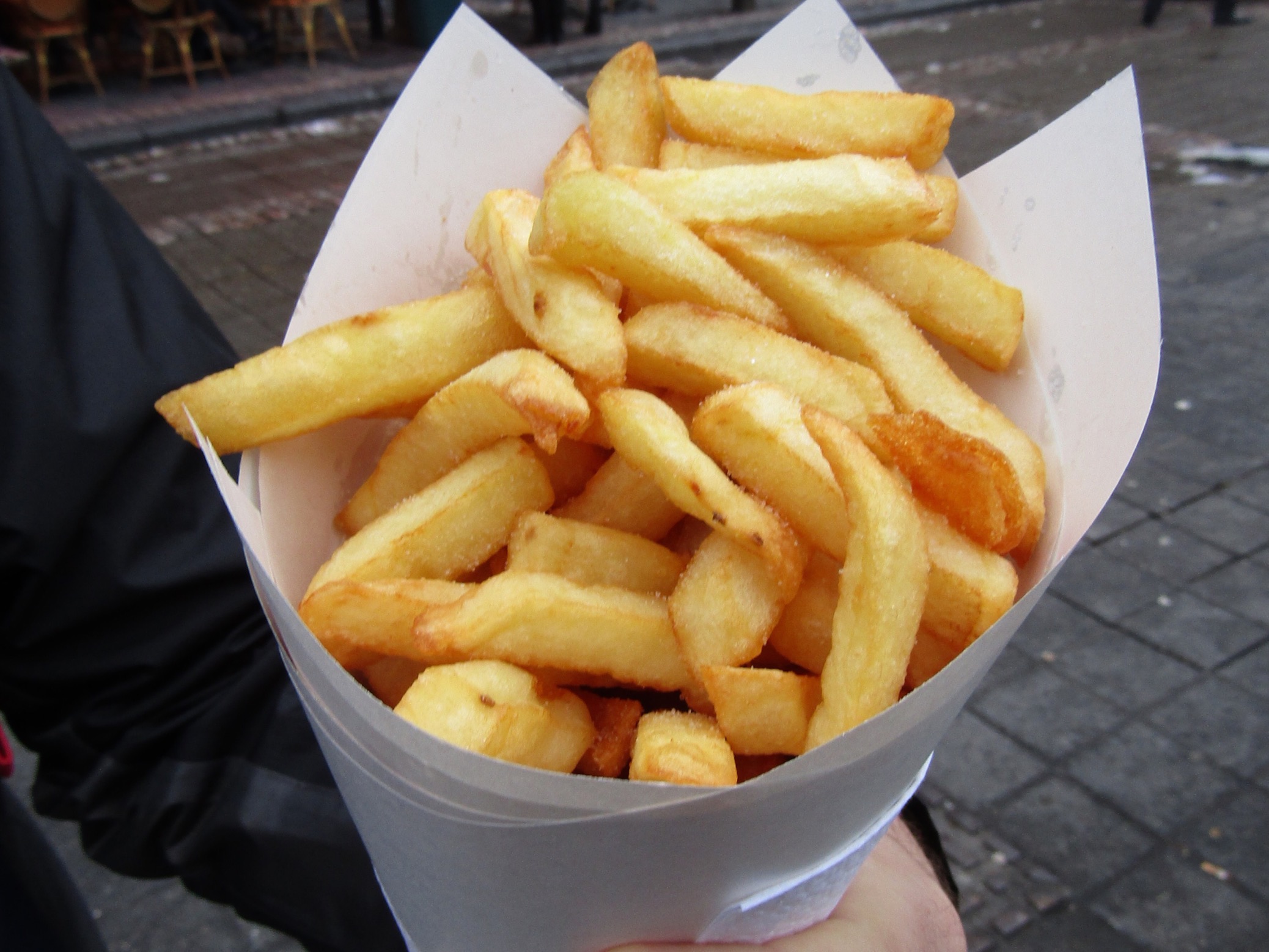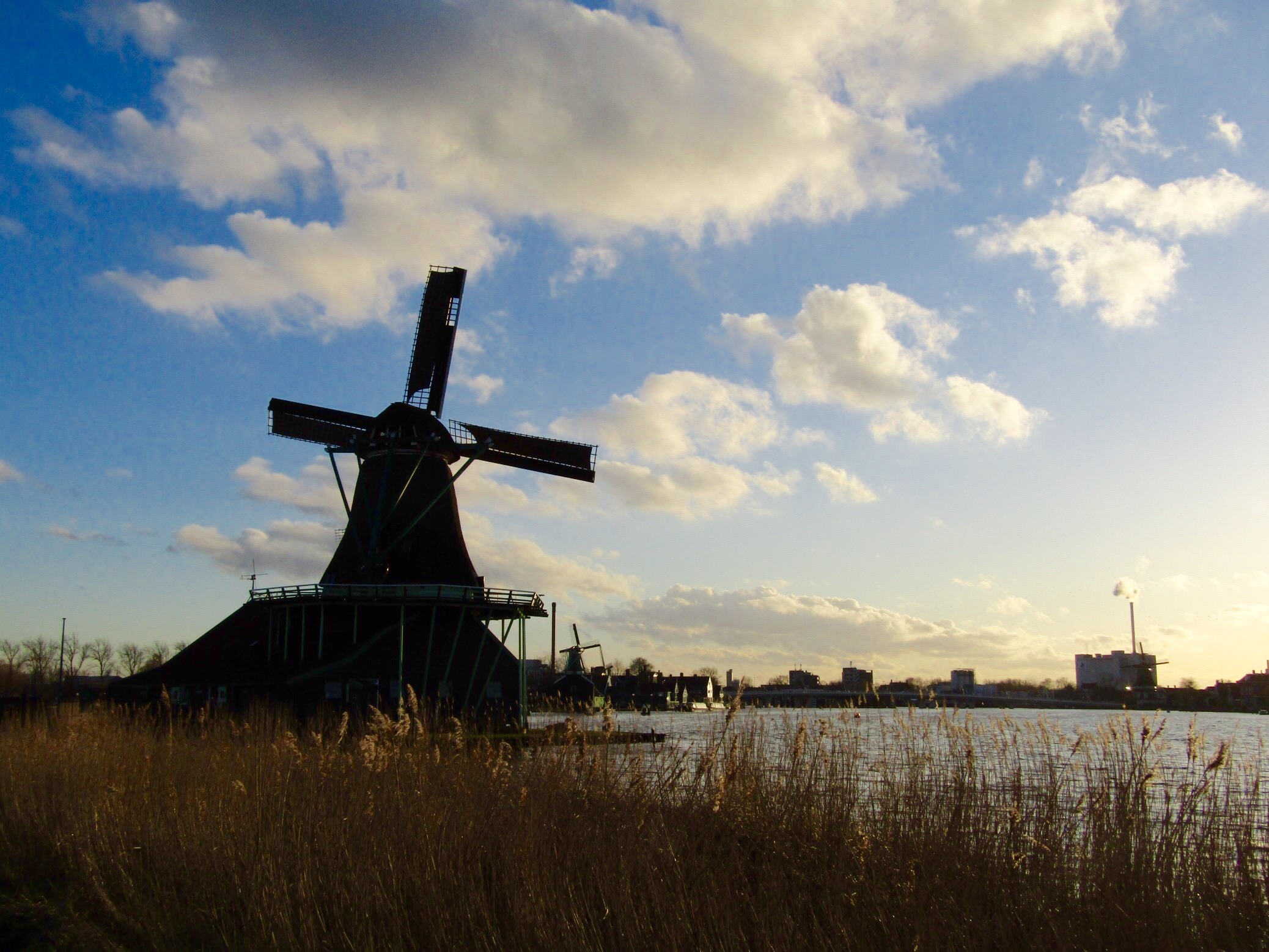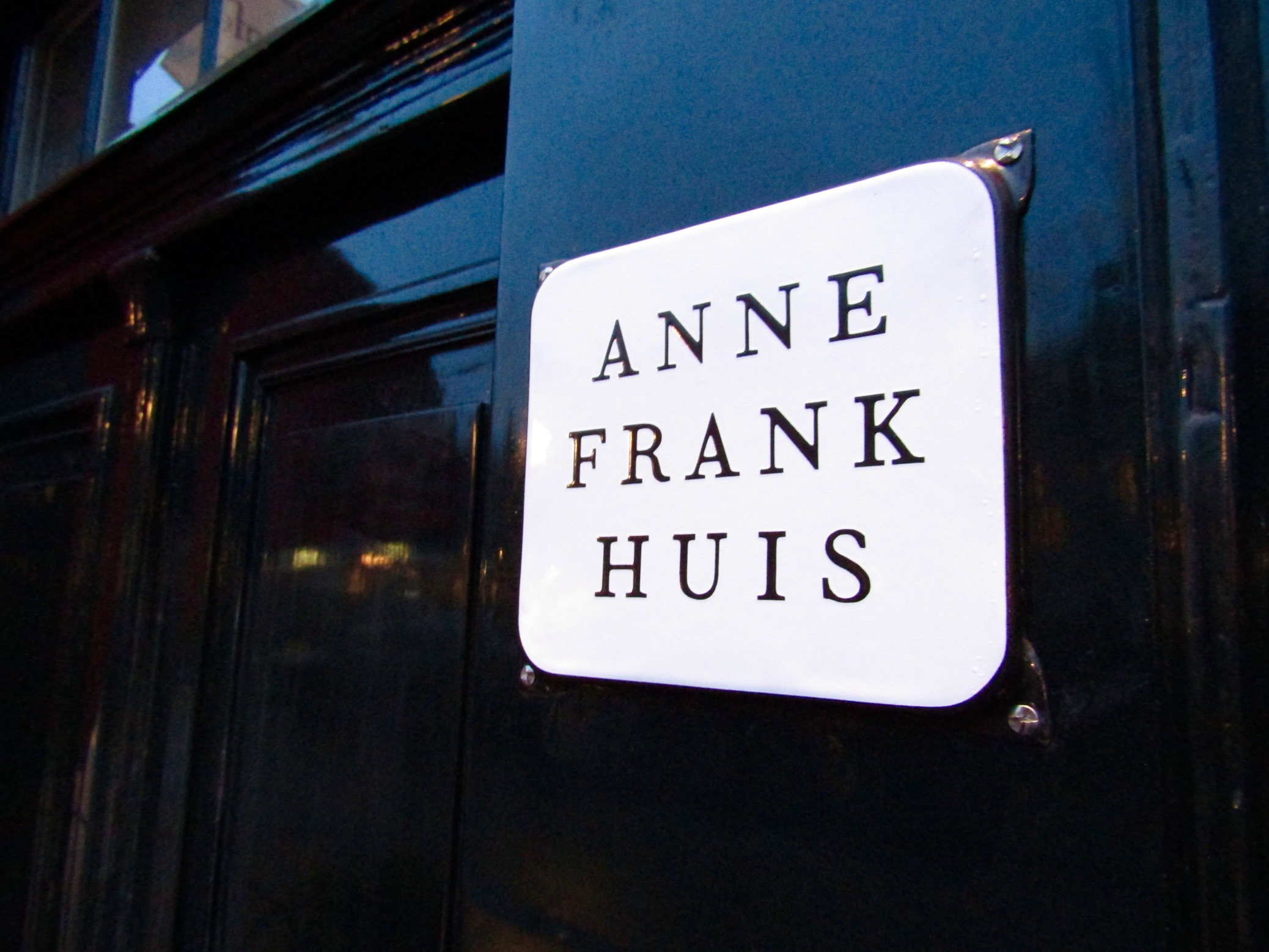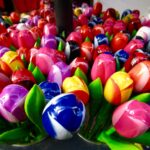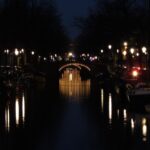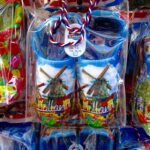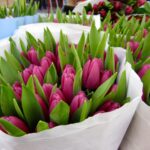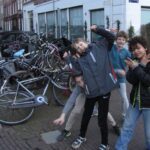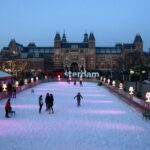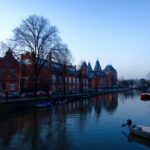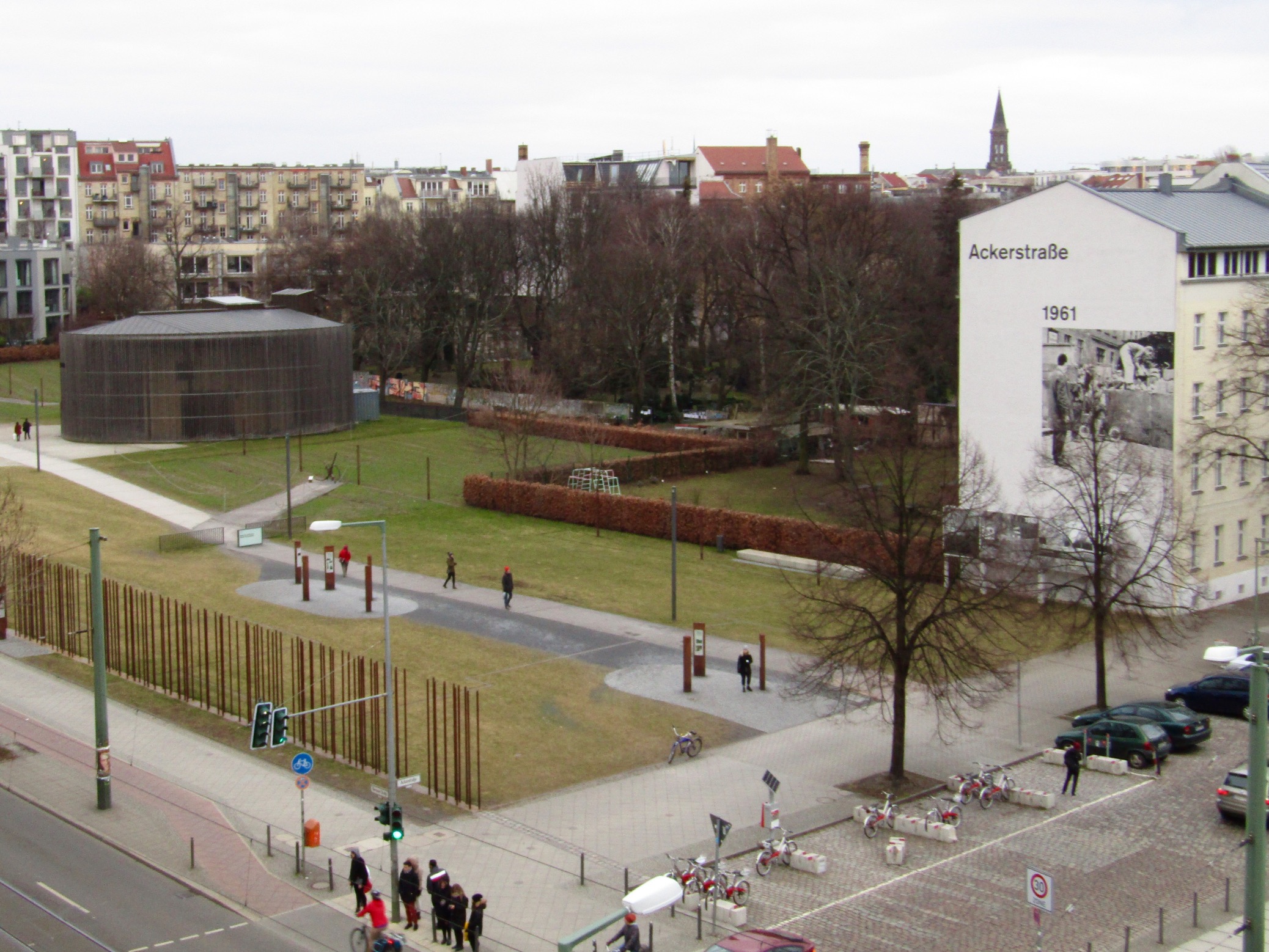I opened the utensil drawer on the first day in our Airbnb apartment to find a mostly empty cutlery tray with only a wine corkscrew in it. “Porto in a nutshell” I thought. But the city famous for its sweet wine has so much more to offer.
With the sun finally breaking through for the first time in what seemed like forever, we set out early on day 31 with an ambitious agenda. We started with another stair climb, the most scenic way to climb the south side hills, to the viewpoint at Miradouro da Vitoria for a morning view of the city. Nearby, the 18th-century baroque church and city icon, Torre dos Clèrigos, soared above the tightly-packed buildings.
Opposite the park near the tower is the famous Livraria Lello & Irmão. Widely considered one of the world’s most beautiful bookstores, Lello gained additional fame when Harry Potter author J.K. Rowling revealed it as a source of inspiration for her popular novels. The architecture is stunning, beginning with the deep red staircase in the middle of the room. Natural light from the stained glass ceiling floods the the collection of both modern books and 100-year-old copies of classics. The old book cart on rails now serves as a shelf for Rowling’s many works.
Across the street, the blue-tiled churches of Igreja dos Carmelitas glistened in the sun. While they appear to be one building, they’re actually two buildings separated by one of the world’s narrowest houses. At just one meter (just over three feet) wide, it served to create a barrier between the nuns of Carmelite Church and the monks of Carmo Church and was occupied as a residence until the 1980s.
After lunch, we boarded the Heritage Tram toward the coast. The vintage cable tram cars move slowly along the Douro River with only three stops along the way. At the end of the line, the conductor manually switches the cable connector from one end of the tram to the other before making the return journey.
We alighted a few blocks away from Porto’s long stretch of Atlantic Ocean-facing beaches. The ocean air was refreshing for the lungs and the soul. We sat along the stone wall for awhile and watched the clouds roll back in. As the sky began to turn to a less-desirable shade of gray, we headed back toward the city center.
The north side of the river is known as Vila Nova de Gaia and has been home to many of Porto’s wine cellars since the 13th century. Prior to the arrival of the railroad, wine was transported in barrels from the Douro Valley to the cellars by small rowboats called Rabelos. The boats are unique to the Porto region and are now on display along the banks of the river.
We chose to tour Sandeman Cellars after reading some reviews online. For just a few euros, we received a group tour (led by “The Don,” the character in the company’s logo) of the wine cellars and a sample tasting at the end.
Sandeman is well-known in the history of the wine industry. It was the first company to put labels on the bottle identifying a wine with its producer. Later, it became the first producer to advertise, including a series of controversial art-nouveau posters.
We made some new friends that night as well. At the cellar tasting, we sat next to a older couple from London, our next destination. The woman was originally from Japan, so we had some interesting stories to share. They gave us a few tips of things to see and do on the next leg of our trip.
On the way back to our apartment, a drunken group of German futbol fans asked us to take a photo of them. The team from Dortmund was in town to play FC Porto and they traveled well, overflowing the riverside bars and singing team songs. The ringleader asked where we were from. When I replied “the U.S.,” he shouted “I love Donald Trump!” and everyone had a good laugh.


Click any photo in the gallery to see a larger version and start a slideshow view




Click any photo in the gallery to see a larger version and start a slideshow view
More Photo of the Day posts from our January-March 2016 trip to Europe




